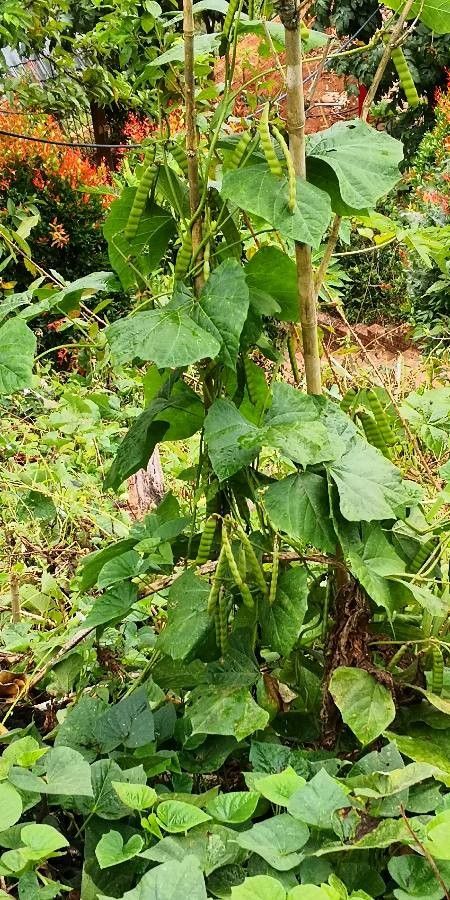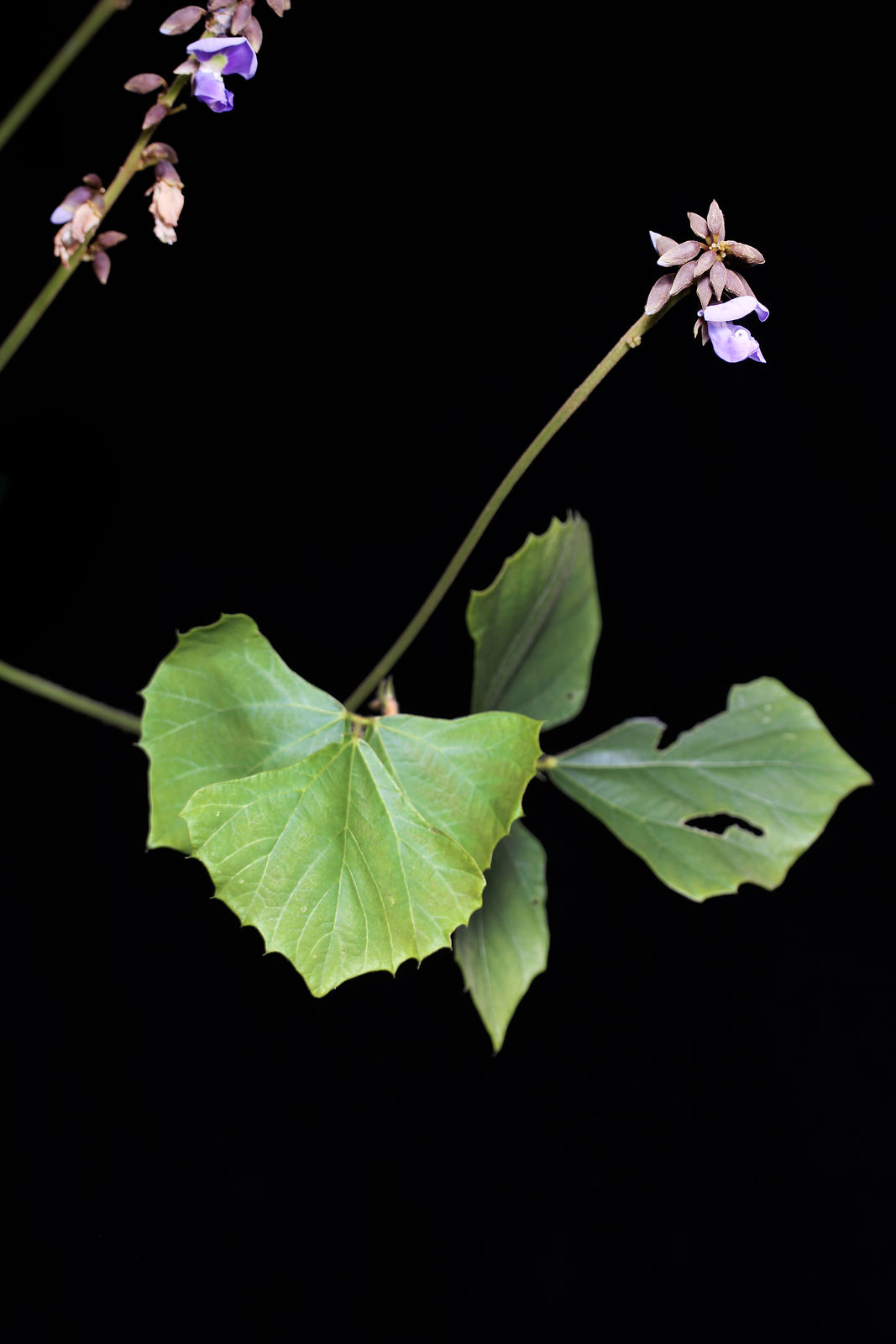Jicama
pachyrhizus erosus
Also known as: ["Mexican yam bean","yam bean","Chinese potato"]
Overview
A tropical vine native to Mexico, cultivated for its edible tuberous root.
Benefits & Perks
["edible fruits","drought tolerant","culinary herb"]
Botanical Classification
| Phylum: | Magnoliophyta |
| Class: | Magnoliopsida |
| Order: | Fabales |
| Family: | Fabaceae |
| Genus: | Pachyrhizus |
| Botanical Name: | Pachyrhizus erosus |
Plant Characteristics
Basic Information
- Category: Vegetables
- Suitable Location: outdoor garden in warm, frost-free regions
- Suitable For:
- Is Weed: No
- Allergenicity: low
Environmental Needs
- Climate: {"temperatureRange":"20–35°C"}
- Hardiness: {"zones":"9–11"}
- Misting: rarely required, only if ambient humidity is very low
- Drainage: Fast-draining to prevent waterlogging and root rot.
- Soil Type: Well-draining, loamy soil with added organic matter; cactus or succulent mix can work well.
Maintenance Level
- Maintenance Level: moderate
- Toughness Level: moderate
- Pruning Frequency: As needed, typically after flowering or when growth becomes leggy.
- Pruning Intensity: Light pruning; remove only dead, diseased, or overcrowded stems.
Care Details
Ideal Sunlight Coverage:
Full sun (6–8 hours of direct sunlight daily); adjust to partial shade in extreme heat to prevent scorching.
Sunlight Tolerance Tips:
Acclimate gradually if moving from indoors to outdoors; protect from intense midday sun; provide shade during heatwaves.
Care Requirements
Care Difficulty
moderatemoderate
Sunlight
full sun
Rotate plant for even growth; use shade cloth in extreme heat; avoid direct sun on leaves during peak hours.
Watering
every 7–10 days during growing season, reduce in winter
Water thoroughly but infrequently; ensure soil dries between waterings; avoid overhead watering to prevent fungal issues.
Soil
well-draining, sandy loam with moderate organic matter
pH: Slightly acidic to neutral (pH 6.0–7.0).
Use raised beds for better drainage; avoid heavy clay soils; amend with organic matter for fertility.
Temperature
Warm temperatures (20–30°C); prefers stable conditions; sensitive to frost.
Avoid sudden temperature changes; protect from frost; maintain consistent warmth for optimal growth.
Fertilizing
every 4–6 weeks during active growth with balanced fertilizer
Apply fertilizer after watering to prevent root burn; stop fertilizing in dormant periods; use organic options for tuber growth.
Propagation
Methods
From seeds or stem cuttings; seeds are more common for home growers.
Step-by-Step Propagation Guide
- Prepare medium.
- Plant seeds or cuttings.
- Maintain moisture and warmth.
- Transplant once established.
Best Time: Spring or early summer when temperatures are warm and growth is active.
Environment
Warm (24–28°C), humid environment with bright indirect light; protect from direct sun.
Medium
Well-draining potting mix with perlite or sand; can also use seed-starting mix for seeds.
Hormone
Rooting hormone is optional but recommended for stem cuttings to improve success rates.
Timeline
Seeds may take 2–4 weeks to germinate; cuttings may root in 3–6 weeks and establish in 2–3 months.
Tools Needed
Pruning shears, rooting hormone (optional), pots, well-draining soil mix, misting bottle.
Quick Tips
Keep soil consistently moist but not waterlogged; provide bottom heat for faster germination; use clean tools to prevent disease.
Pruning & Repotting
Pruning Guide
Method
Snip stems just above a leaf node or lateral branch; avoid cutting into old wood.
Pruning Plan
Minimal pruning needed; focus on removing dead or damaged growth to maintain health and vigor.
Tools
Pruning shears, sterilized knife, gloves.
Checklist
Sterilize tools; prune dead or damaged growth; avoid over-pruning; clean up debris after pruning.
Repotting Guide
Best Season
Spring, before the growing season begins.
Pot Size
One size larger pot (e.g., +2–3 cm in diameter); ensure adequate drainage holes.
Method
Gently remove plant; trim any dead roots; place in a slightly larger pot with fresh, well-draining soil; water lightly.
Suggestions
Repot every 2–3 years or when roots fill the pot; necessary to support tuber growth and prevent overcrowding.
Checklist
Choose appropriate pot size; use fresh soil mix; handle roots gently; water after repotting.
Advanced Care Tips
Watering Mastery
Watering Checklist
Check soil moisture before watering; water deeply at the base; ensure proper drainage; adjust frequency seasonally.
How to Apply Water Properly
Water directly at the root zone until water drains from the bottom; ensure even moisture without waterlogging; water in the morning to allow foliage to dry.
Watering Schedule Tips
Water deeply once the soil surface is dry to the touch; reduce frequency in winter to prevent root rot.
Soil Improvement
Add perlite or sand for drainage; incorporate compost for fertility; ensure soil is loose and airy.
Temperature Stress Management
Signs of Temperature Issues
Wilting, yellowing leaves, stunted growth, or leaf drop in extreme heat or cold.
Cold Stress
Growth slows or halts; roots may rot in cold, wet soil; leaves may turn yellow or brown.
Solution: Move to a warmer location; protect roots with mulch; avoid overwatering in cold conditions.
Hot Stress
Leaf scorch, wilting, or reduced tuber development due to excessive heat and water loss.
Solution: Provide shade during peak heat; increase watering frequency; use mulch to retain soil moisture.
Fertilizing Guide
Fertilizing Checklist
Use diluted fertilizer; apply during active growth; avoid winter feeding; monitor for nutrient burn.
Fertilizing Method
Use a balanced, water-soluble fertilizer diluted to half strength every 4–6 weeks during the growing season; avoid fertilizing in winter.
Common Problems & Solutions
Toxicity Warning
Cats
ToxicCats are particularly susceptible to the toxins in Pachyrhizus erosus, which can lead to severe neurological and gastrointestinal issues. The rotenone content is especially dangerous for felines.
⚠️ Symptoms:
🌿 Toxic Parts:
⚡ Toxic If:
if eaten raw or improperly prepared
Dogs
ToxicDogs are highly sensitive to the rotenone and other toxins in Pachyrhizus erosus seeds and skin, which can cause severe neurological and gastrointestinal distress. Proper preparation is essential to avoid poisoning.
⚠️ Symptoms:
🌿 Toxic Parts:
⚡ Toxic If:
if eaten raw or improperly prepared
Humans
Slightly ToxicThe seeds and skin of Pachyrhizus erosus contain rotenone and other toxic compounds that can interfere with the nervous system and cellular respiration. Proper cooking neutralizes these toxins, making the flesh safe for consumption.
⚠️ Symptoms:
🌿 Toxic Parts:
⚡ Toxic If:
if eaten raw or improperly prepared
Frequently Asked Questions
Q: Is jicama safe for pets?
A: Yes, jicama is non-toxic to dogs and cats.
Q: Can you eat the leaves of jicama?
A: No, the leaves and seeds are toxic and should not be consumed.
Q: How do you store jicama?
A: Store jicama in a cool, dark place for up to two weeks, or refrigerate for longer storage.
Quick Reference
| Family: | Fabaceae |
| Care: | moderate |
| Light: | full sun |
| Water: | every 7–10 days during growi |
Get Expert Care Tips
Download the Plantious app for personalized care reminders and plant identification!
Google Play App Store








